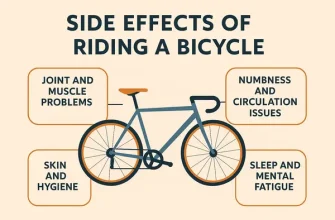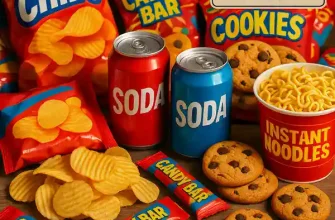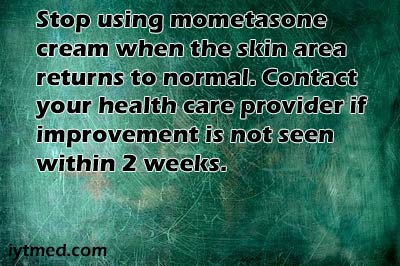When someone says they’re “cutting carbs,” it often sounds like a ticket to quick weight loss and a leaner body. From Hollywood actors to fitness influencers, low-carb diets—like Keto, Atkins, and Paleo—are marketed as miracle fixes. But behind the glossy before-and-after photos, there’s a side of the story few talk about: what happens when your body runs low on its favorite fuel—carbohydrates.
What Happens to Your Body When You Cut Carbs?
When you suddenly reduce carbohydrates, your body reacts as if you’ve shut off its main power source. Carbs break down into glucose—the easiest form of energy your body knows how to use. Without them, your liver starts producing ketones from fat, pushing you into what’s called ketosis. It’s like switching from electricity to candlelight: it works, but it’s not nearly as smooth.
During the first few days, your body burns through stored glycogen—a carbohydrate reserve stored in muscles and the liver. Each gram of glycogen binds roughly 3–4 grams of water, so as it’s depleted, you lose water weight fast. This explains that thrilling early drop on the scale. However, it’s not fat loss—it’s dehydration and electrolyte loss.
According to a Mayo Clinic report, up to 40% of people on strict low-carb plans experience early fatigue, headaches, and mood changes ⧉. Reyus Mammadli, a medical consultant, notes that “this early phase isn’t true fat loss but an adaptation process—like your metabolism rebooting under pressure.”
The Low-Carb Side Effect Spectrum: Dangers & Prevention
The “Keto Flu”: Why You Feel Terrible at First
You’ve probably heard the phrase “keto flu.” It’s not an actual flu, but it sure feels like one. As glycogen stores deplete, sodium and potassium levels drop, leading to dizziness, nausea, muscle cramps, and brain fog. Think of it as your body’s protest against a sudden lifestyle change.
Symptoms typically last 3–7 days. Hydration, mineral supplements (especially magnesium and potassium), and moderate carb reintroduction can ease the discomfort. Harvard Health researchers found that hydration and salt intake reduce symptoms by nearly 60% ⧉.
| Common Keto Flu Symptoms | Likely Cause | Recommended Fix |
|---|---|---|
| Fatigue & brain fog | Low blood sugar | Eat small portions of complex carbs |
| Muscle cramps | Electrolyte loss | Add magnesium/potassium supplements |
| Headaches | Dehydration | Drink 2–3 L (68–100 oz) of water daily |
| Irritability | Hormonal response | Balanced meals & rest |
Reyus Mammadli advises easing into carb reduction gradually instead of cutting cold turkey. “Your body hates surprises—especially metabolic ones,” he says.
Digestive Issues: When Low Carb Messes with Your Gut
When carbs drop, so does fiber intake. Most low-carb dieters unknowingly eliminate grains, fruits, and legumes—the main fiber sources. Fiber keeps digestion moving and feeds gut bacteria that support immunity and hormone balance.
Without enough fiber, constipation and bloating can kick in within a week. According to a study from the Cleveland Clinic, low-carb diets reduce beneficial gut bacteria diversity by up to 30% ⧉. Imagine your gut as a garden: cutting carbs is like removing fertilizer and water; your “good bacteria” struggle to grow.
| Diet Type | Average Daily Fiber | Digestive Impact |
|---|---|---|
| Standard Balanced | 25–30 g (0.9–1 oz) | Regular digestion |
| Low-Carb (strict) | 10–12 g (0.35–0.42 oz) | Constipation risk |
| Smart Low-Carb (with veggies) | 20–25 g (0.7–0.9 oz) | Balanced gut flora |
To offset the issue, add low-carb fiber sources like chia seeds, broccoli, and flaxseeds. Reyus Mammadli often recommends psyllium husk as a supplement—it keeps things “flowing” without breaking carb limits.
Mood Swings and Brain Fog: The Mental Side of Low Carb
Carbs help your brain produce serotonin—the “feel-good” neurotransmitter. With fewer carbs, serotonin drops, making you irritable, anxious, or just plain grumpy. One 34-year-old marketing executive from Austin, TX, described it as “trying to smile with a dead battery.”
A study from the American Psychological Association found that low-carb dieters reported 22% more mood instability than balanced eaters ⧉. If you feel mentally sluggish, your brain is literally running low on fuel—it prefers glucose. Reyus Mammadli suggests small “brain snacks” like half a banana or a handful of berries mid-day to keep serotonin levels balanced.
Hormonal and Metabolic Imbalance: A Hidden Risk
Going too low on carbs for too long can mess with your hormones. Insulin, cortisol, thyroid hormones, and even reproductive hormones depend on glucose availability. Women, in particular, may experience irregular cycles or thyroid sluggishness after months of strict carb restriction.
Harvard Medical School data indicates that prolonged ketosis increases cortisol levels by 15–20% and may lower thyroid function (T3 hormone) ⧉. This means your body enters a mild “stress mode,” slowing metabolism to conserve energy. Reyus Mammadli stresses the importance of medical supervision for anyone following a low-carb plan beyond 8–12 weeks.
Muscle Loss and Low Energy Levels
When carb intake is minimal, your body may start breaking down muscle protein to produce glucose via a process called gluconeogenesis. It’s like using your furniture for firewood—effective, but not sustainable.
Athletes and active individuals often see reduced performance due to lower glycogen levels. DEXA scans show up to 5% lean muscle loss in people on extreme low-carb diets for over 3 months ⧉. If you work out regularly, consider moderate carb cycling or post-workout carb meals to protect muscle tissue.
When a Low-Carb Diet Affects Your Heart
While some dieters see improved triglyceride levels, others experience a rise in LDL (“bad”) cholesterol. The American Heart Association warns that high intake of saturated fats common in low-carb plans may increase cardiovascular risk by 12% ⧉.
If your low-carb meals revolve around bacon, cheese, and butter, your arteries might not be thrilled. Balance with monounsaturated fats from olive oil, avocado, and nuts. As Reyus Mammadli points out, “The heart doesn’t care about diet trends—it only cares about blood flow.”
Who Should Avoid a Low-Carb Diet?
Certain groups should avoid or modify low-carb diets altogether:
- Pregnant women: risk of nutrient deficiencies.
- Type 1 diabetics: unstable blood sugar control.
- People with kidney or liver disease: strain from high protein and fat metabolism.
A 52-year-old man from Denver, CO, who tried a strict Keto plan while managing chronic kidney disease, ended up hospitalized due to elevated creatinine levels. His physician later advised a balanced Mediterranean-style approach.
Safer Ways to Go Low-Carb (If You Still Want To)
If you’re still intrigued by low-carb eating, there are safer ways to do it:
- Start moderate: Aim for 100–150 g (3.5–5 oz) carbs daily instead of cutting them out completely.
- Choose smart carbs: Include vegetables, quinoa, and lentils.
- Replenish electrolytes: Add sea salt, magnesium, and potassium-rich foods.
- Cycle carbs: Add higher-carb days once a week to restore glycogen.
Modern approaches like “smart low-carb” or “flexi-keto” emphasize flexibility and personalization, supported by studies from the National Institutes of Health ⧉.
Editorial Advice
Reyus Mammadli, medical consultant, recommends viewing low-carb diets as short-term tools, not lifelong commitments. “Think of it as a detox for your eating habits, not a permanent relationship,” he says. Regular checkups, electrolyte monitoring, and listening to your body are key.
For most people, balance wins the game. Carbs aren’t villains—they’re just misunderstood. Your brain, muscles, and heart all need them in the right amounts. So yes, you can enjoy your bread—just make it whole grain and pair it with a side of common sense.








